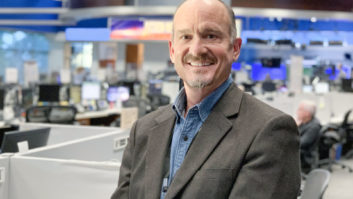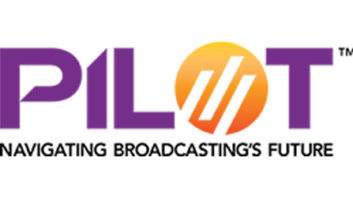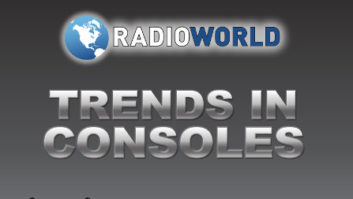The author is director of studio products for manufacturer Broadcast Electronics.
As part of the studio design and support team for a global company, I often find myself comparing the cultures of two world powers. Europeans definitely win hands-down when it comes to taking time off to enjoy a long summer holiday, although it’s hard to beat a good American-made movie for some quality time off.
Each brings entirely unique skill sets and technology to studio operation as well. At BE, we are always asking what we as an automation company can learn from our friends on both sides of the ocean.

Certainly, European broadcasters have benefited from the U.S. “live and local” franchise as independent and commercial radio evolved and matured in these markets. Likewise, U.S. broadcasters, in light of station consolidation, have benefited from the European network enterprise model.
One vs. many
I can remember when most U.S. studios were geared toward single-station operation. Content management system integration was nonexistent because the number of cuts coming out of those stations, even a news station, was fairly small and manageable, and all the content was local in any case.
Not so for European broadcasters, who had lots of content to manage across large news networks. They readily adopted the CMS mindset from their fellow television broadcasters, who were probably just down the hall in the same facility.
When U.S. station consolidation took hold in recent years, those of us developing automation systems began to look long and hard at the CRM model to solve the problems that come with networked operations. Systems rooted in the U.S. radio culture like our AudioVault were retooled to manage large music libraries and workflow adequately in these complex environments.
At the same time, our European friends started to take notice of the flexibility and affordability of U.S. radio systems. They needed to add a little more live-and-local into the mix as commercial radio began to grow in these countries. Their systems tended to be proprietary and slow to adapt, especially to the new Internet opportunities that made it difficult to grow with the times.
What we learned developing automation systems for the highly unpredictable and commercial U.S. market transferred easily to the modern European studio. As Windows platforms with Ethernet connectivity, systems like the AudioVault FleX are foundationally reliable yet dynamically changeable. U.S. and European broadcasters have been able to adapt at the rate of change, such as being able to connect devices through audio-over-IP protocols as that technology became available and incorporating the latest audio editor for better voicetrack capability, for example.
Along comes the cloud
Now, along comes cloud computing, which seems to be the great lesson learned from both operational models.
Cloud computing essentially moves radio away from the limitations of the physical studio to a virtual existence in the cloud, where tasks and resources take place in a network shared by multiple studios. It removes the server as the center of all activity, eliminating a single point-of-failure, and replaces it with a multi-engine, component-based infrastructure for shared redundancy and flexibility.
As it happens, cloud computing takes advantage of the enterprise model the Europeans have perfected over the years, and puts that into an open, easily adaptable environment that has been so important to the live and local model put forth by U.S. stations. It is the best of standardized PC technology and proprietary systems.
Recognizing this, we at BE made the decision to move to a separate playout engine and user interface with the release of AudioVault FleX two years ago.
Separating the playout engine from the user interface opens the door to several interesting possibilities: The engine and the user interface can be now hosted in different environments or multiple engines can be chained together to form active-passive pairs for redundancy, with multiple user interfaces connected to a single engine.
Needless to say, without this separation of the user interface and the playout engine it is impossible to move to a cloud platform. This coupled with the availability of IP-based GPIO control, like the RIOT box from BE, makes automation-on-the-cloud a near possibility.
When this happens, stations will realize huge operational benefits.
Instead of installing and maintaining a suite of software for each studio or each PC, one application makes it possible for station personnel to merely log into a Web-based service that hosts all the programs the user would need for his job. We’re talking some very serious cost containment benefits in terms of hardware and software, not to mention support infrastructure.
Add to this new capabilities for sharing syndications, libraries and talent for less. It also makes possible the integration of traditional over-the-air radio with digital formats like Web streaming and social media. This is going to be important to stations on both sides of the ocean as broadcasters meet the challenge of incorporating mobile interactivity and social media without disrupting business and content as usual.
BE’s new line of Commotion mobile interactive products for the studio is an excellent example of the radio-on-the-cloud model. The entire suite of products is available in a SaaS (Software as a Service) model, whether setting up a DJ Wall for interacting with listeners online or “crowdsourcing” music playlists from listeners voting in on their iPhones and Androids or through Facebook, Twitter or Google.
Our education doesn’t stop at the studio door. As the Internet, mobile devices and satellite change the world, and the world gets smaller, it seems there is something new to learn every day.
Hari Samrat has an engineering background with an emphasis on computer science. He was a designer and architect of BE’s Flex architecture, and leads new studio developments for the AudioVault FleX and The Radio Experience (TRE) lines, including cloud computing and mobile interactive initiatives. He is co-inventor of a device to extend the reach of talk radio to the hearing impaired.












